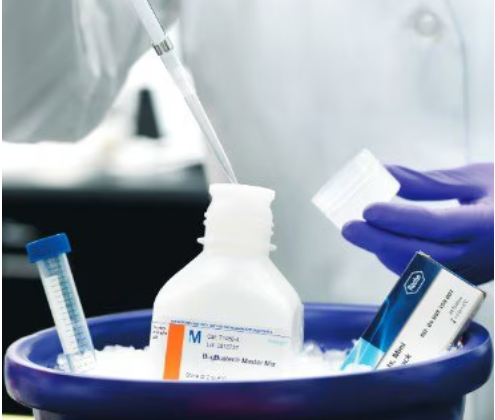 首页>
生物试剂
首页>
生物试剂
商家描述
售后服务
商家资质信息
产品评价(0)
Water is a critical component of all living cells. Interestingly, tissue membranes show a great degree of water permeability. Mammalian red cells, renal proximal tubules, and descending thin limb of Henle are extraordinarily permeable to water. Water crosses hydrophobic plasma membranes either by simple diffusion or through a facilitative transport mechanism mediated by special protein \aquaporin\. Over the last decade, genes for several members of aquaporin family have been cloned, expressed, and their distribution studied in many tissues. Aquaporin-0 or MIP26 (major intrinsic protein 26 kDa), and Aquaporin-1 (purified from red cells) also called CHIP-28 (channel forming integral protein, 28 kDa; 268 AA; gene locus 7p14) has been the foundation of the growing family of aquaporins. The lens specific Aquaporin-0 represents up to 80% of total lens membrane protein. Defects in MIP26 are a cause of autosomal dominant cataract. The cataract Fraser mutation (CAT-FR or Shriveled) is a transposon-induced splicing error that substitutes a long terminal repeat sequence for the c-terminus of MIP. The lens opacity mutation (LOP) is an AA substitution that inhibits targeting of MIP to the cell membrane. Aquaporin-6 (WCH3 or hKID or AQP2-like; 282 aa; 29 kDa; chromosome 12q13) is found only in the kidney with low water permeability. Aquaporin families of proteins are predicted to contain six transmembrane domains. The N and C-terminus are predicted to be cytoplasmic. Aquaporin-6 shows greatest homology with hMIP (48%) and hAQP-2 (52%). It also has similarity with human MIWC (AQP4; 34%), CHIP-28 (AQP1; 38%), and GLIP (AQP3; 22%).,官网链接:https://www.sigmaaldrich.cn/product/mm/ab3073
默克
科研、开发、生产。
作为生命科学行业的全球领先供应商,我们致力于为科研、生物技术开发和生产,以及制药药物疗法开发和生产提供各类解决方案和服务。
 会员登录
会员登录.getTime()%>)
 购物车()
购物车()

 成功收藏产品
成功收藏产品
